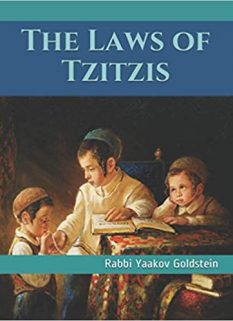*The article below is an excerpt from the above Sefer
*As an Amazon Associate I earn from qualifying purchases.
Chapter 3: The Intellect & Emotions of the G-dly soul
(LY) 27th Kisleiv
1. The ten aspects included in each soul:
- Each one of the three soul levels of the Nefesh, Ruach and Neshama, is made up of 10 aspects or traits.
- The reason each soul contains ten aspects-Hishtalshelus from the ten Sefiros: These 10 traits correspond to the 10 Sefiros from which the soul descended and derived.
2. The Divisions of Mochin and Middos found in the 10 Sefiros:
- Split into two groups: The 10 Sefiros are split into two groups, with the first known as “mothers” and the second known as Kefulos [doubles or pairs].
- The first group-Mochin: The first group of mothers includes within it the intellectual traits of Chochmah, Bina, and Daas.
- The second group-Middos: The second group incorporates the emotional traits which consists of the seven attributes of kindness, severity, etc.
3. The Divisions of intellect and emotion found in the soul:
- Just as we find two divisions within the Sefiros, so too, there are two divisions found within the soul: the intellect and the emotions.
- The intellect-Mochin: The intellect consists of the traits of Chochmah, Bina, and Daas.
- The emotions–Middos: The emotions consist of the feelings of love of G-d, trepidation and fear of Him, etc.
- The term Mothers/Imahos: The reason that the intellect is called by the term “mothers” is because the intellect is the source for the emotions, as emotions come as a result of one’s intellect and understanding.
- The explanation behind both the intellectual and emotional traits and how the latter is a result of the former will be brought below.
4. The intellectual powers of the soul known as Chabad:
- The level of Chochmah-Discovery: The attribute of Chochmah corresponds to the level of intellect that is found in the intellectual soul, known as the Nefesh Hamaskeles. It is this level of intellect that discovers all new intellectual matters and ideas.
- Koch Mah: This level is also known as Koch Mah.
- The level of Bina-Comprehension of discovery: The attribute of Binah corresponds to the contemplation of a certain intellectual idea to the point that it is fully broken down and understood in all its depth. Thus, while it is the attribute of Chochmah which discovers the intellectual concept and idea it is the attribute of Binah which breaks it down and fully understands it.
- The father and mother: These two intellectual attributes of Chochmah and Binah are the father and mother which birth the emotions of love and fear of G-d. [The Alter Rebbe will now explain the exact relationship between the intellect/Chabad and the emotions/Middos, and how the former gives birth to the latter.]
Related Articles
Daily Tanya Wednesday 13th Tamuz Igeres Hateshuvah Chapter 4 Part 1: Teshuvah Ilah and Tatah
Post Views: 43 Chapter 4 1. Purpose of Repentance and Its Levels Repentance (teshuvah) is essential for spiritual atonement and cleansing of the soul before the Divine. After proper repentance, sacrificial offerings serve as a gift, as described in the Talmud. 2. Understanding True Repentance The main aspect of repentance
Daily Tanya Tuesday 12th Tamuz Igeres Hateshuvah Chapter 3 Part 3: Redeeming Fasts with Charity
Post Views: 89 1. Fasting in our times for rectification of sin: Fasting the full set of fasts for severe sins: One is to fast at least lease one time in his life the number of fasts required for the severe sins that carry a death penalty, such as for
Daily Tanya Monday 11th Tamuz Igeres Hateshuvah Chapter 3 Part 2: Who Should Fast?
Post Views: 112 11th Tamuz 1. Who Should Fast Frequent fasting is appropriate only for those who are healthy and strong, much like in earlier generations. Those whose health may be harmed by numerous fasts should avoid them, even for severe sins. 2. Limitations on Fasting Even in past generations,
Daily Tanya Thursday 7th Tamuz Igeres Hateshuvah Chapter 1 Part 1: The types of sins and their atonements
Post Views: 192 Chapter 1: 7th Tamuz 1. Types of Atonement There are three types of atonement, each corresponding to a category of transgression. Repentance (teshuvah) is required in all cases. 2. Atonement for Positive Commandments If one fails to fulfill a positive commandment and repents, forgiveness is immediate. However,
Daily Tanya Wednesday 6th Tamuz Shaar Hayichud Viemuna Chapter 12 Part 2: The 22 letters of the Hebrew alphabet
Post Views: 199 1. Reflective Nature of Divine Light Just as moonlight is a reflection of sunlight, the substituted letters are a reflection of the divine energy that sustains creation. 2. The Letters as Channels of Life-Force The letters of the divine utterances are channels for the life-force, light, and
Daily Tanya Tuesday 5th Tamuz Shaar Hayichud Viemuna Chapter 12 Part 1: Creation through the letters
Post Views: 197 Chapter 12: Creation through the letters 5th Tamuz 1. Creation Through Combinations Creatures are formed through various combinations, substitutions, and transpositions of the twenty-two letters. Changing the arrangement of letters results in new forms and beings. 2. Unique Roles of Individual Letters Each letter has a unique


 Donate
Donate
Leave A Comment?
You must be logged in to post a comment.